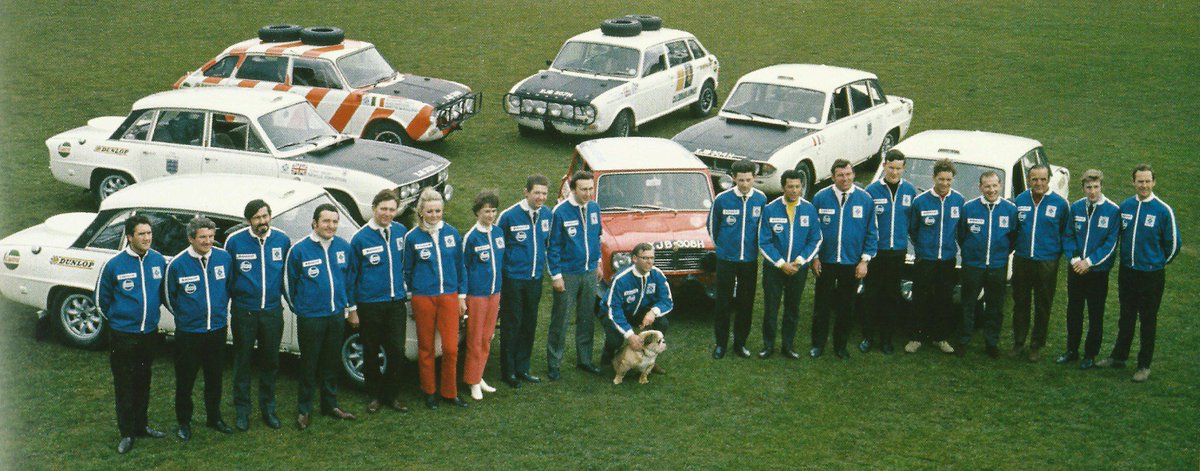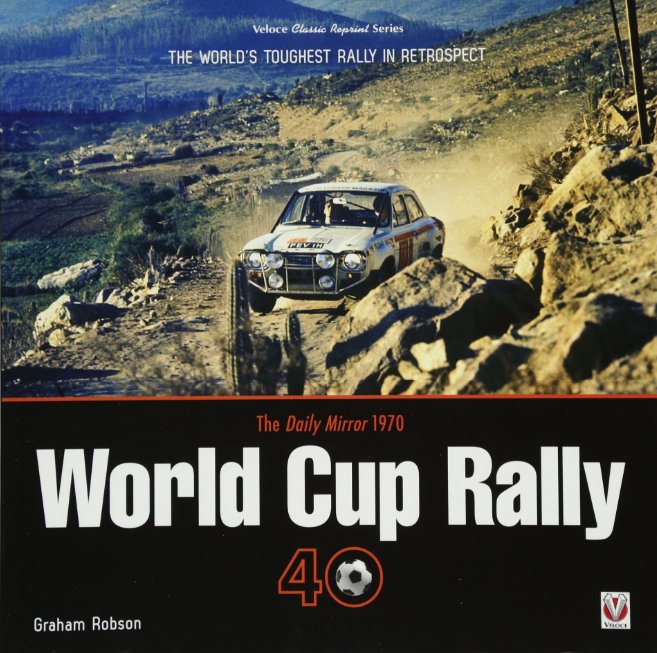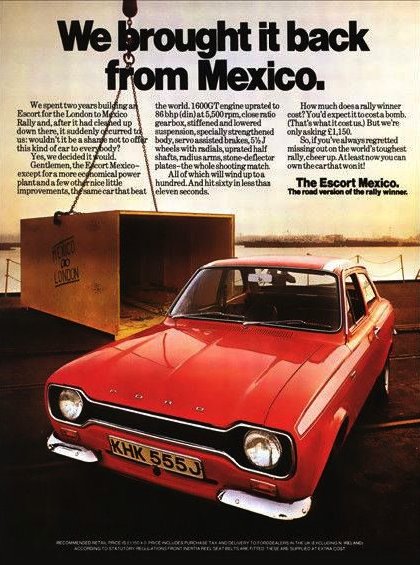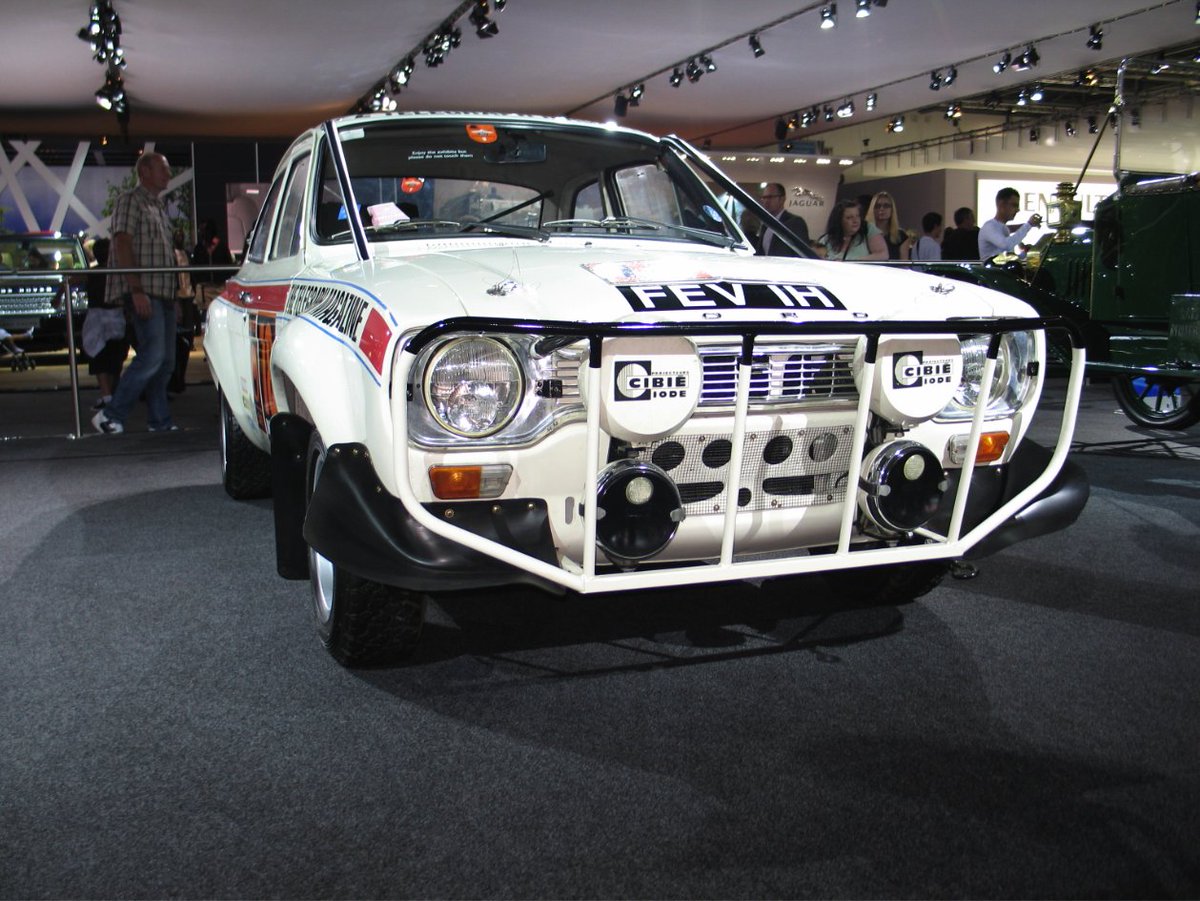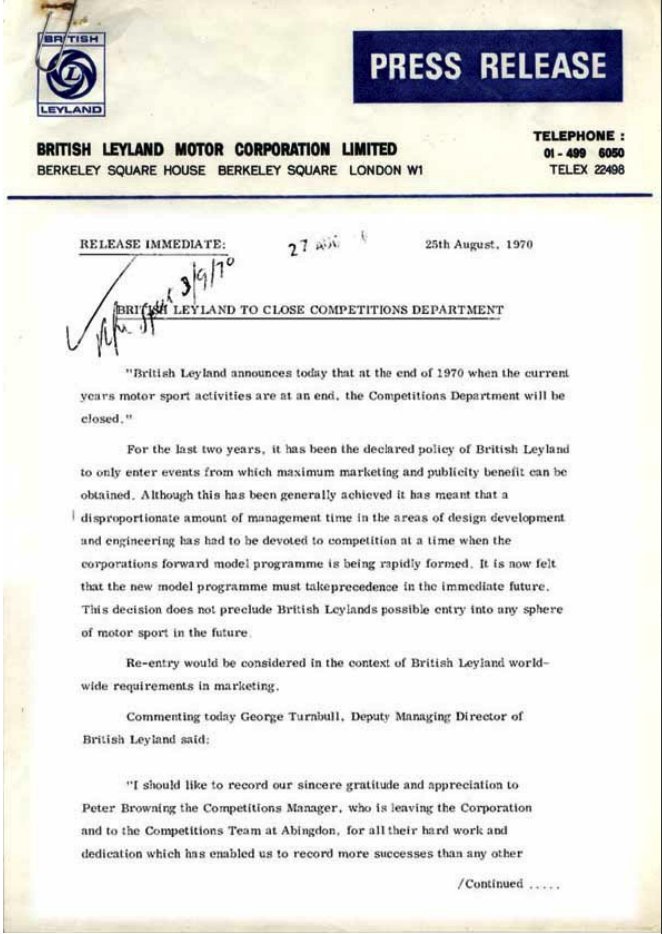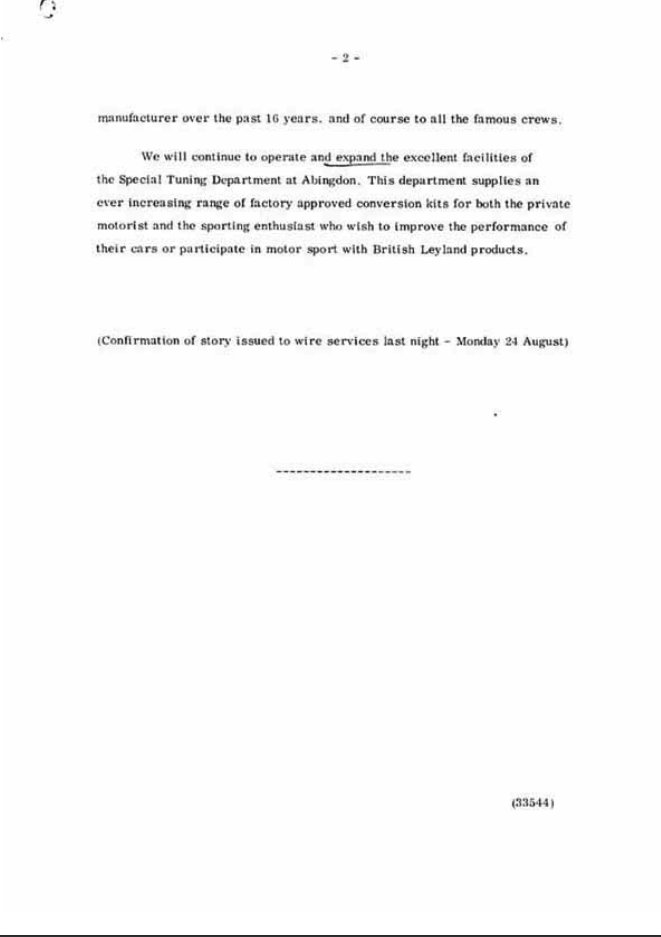Factoid No:388- @neilmbriscoe @t2stu @TopOfTheTower @Nigel_Mutt @DarraghMcKenna @Roadster_Life The & #39;Marathon& #39; rallies of the late 60s & 70s have always interested me. For tonight& #39;s factoid, I thought I& #39;d have a look at the 2nd event, London to Mexico World Cup Rally of 1970.
This was the 2nd of the so-called & #39;marathon& #39; rallies & started with the 1968 London-Sydney Marathon rally which took place btwn 24 Nov–17 Dec 1968 & had a distance of 16,694 km (10,373 miles). The rally attracted worldwide interest & wide participation from motor manufacturers.
That rally, which I& #39;ll cover in another factoid, had seen likely winner Lucien Bianchi being involved in a head-on crash less than 100miles from the finish. Paddy Hopkirk turned around & going for help (costing victory). This meant the winner was Andrew Cowan in a Hillman Hunter.
The next event was timed to coincide with the opening of the World Cup in Mexico City & sponsored by the Daily Mirror, guaranteeing news coverage. In my research, I& #39;ve found a remarkable film on YouTube which offers a good overview of the rally, called & #39;The Long Rally& #39;.
We begin before the event with testing at Bagshot & see the Ford team in action. Ford had chosen a special Escort GT with a 1850cc engine. Among the team was veteran rally driver Roger Clark but also footballer Jimmy Greaves, who wasn& #39;t playing for England in the World Cup.
BL were also here though they were using the older MK1 2500 Pi. Peter Browning getting into the car was BL& #39;s Competiton Manager (who had replaced Stuart Turner who had gone to Ford).
In this same clip is the full BL team which had MK2 2500Pis, plus 2 Maxis & sole Clubman.
In this same clip is the full BL team which had MK2 2500Pis, plus 2 Maxis & sole Clubman.
The rally would start from Wembley (apt given the nature of the event) & now the teams did their last-minute preps. Previous London-Sydney winners, Rootes (now Chrysler UK) weren& #39;t competing but hoping on privateers, which says a lot about its awful Marketing & PR awareness...
The next day the entries start in Wembley Arena with 96 entries from over 20 countries. Of all teams, there was no doubt Ford were the favourites - here& #39;s former Cooper S champion driver, Rauno Aaltonen & co-driver, Henry Liddon (who partnered Hopkirk to victory in the Monte).
There are great scenes as the cars wend their way through London with plenty of crowds watching. It was certainly a diverse group of entries including a beach buggy, a Moskvitch & a Jeep Wagoneer. Soon they& #39;re at Dover for the crossing to France & we catch sight of a Trident...
The route takes them from France & soon they are in Germany to stop at the BMW factory in Munich for one of the controls points. By the standards of today it all looks very quaint but these stages were really the preliminaries for much tougher challenges to come...
Much like the Monte Paddy Hopkirk competed in, the rally goes into the & #39;Iron Curtain& #39; & it brings out the spectators too. Already the rally has had some retirements though most are still competing. As the cars head for service, journalist Graham Robson acts as chief usher.
After the normal roads, there are some mountain passes to negotiate & this seems like a stage in the Monte Carlo Rally. The crews eventually hit Italy & Monza where there& #39;s time for service & a rest. Hannu Mikkola was 1 of the Ford team was just 23yrs old & a great career ahead.
Even though the rally is at an early stage, the punishing progress is already affecting some of the cars. Note the Mini Clubman BL entry which is rather curious as it seems that have been based on a MK2 Mini with the sliding windows, LHD set wipers & exposed door hinges...
The rally& #39;s European leg continues as the crews had to San Remo & into prime rally country. Already some have fallen by the wayside including 1 of the Triumph 2.5 Pis which had @greenofrichmond& #39;s Father, Evan Green, had been competing in. That story was recounted in @CARmagazine.
These were treacherous mountain roads where the professional rally drivers showed their advantage. You& #39;ll notice Rosemary Smith& #39;s Maxi in this clip which did remarkably well in the overall event in 1 of its only rally outings, though BL did little to capitalise on this fact.
Remember my comment about ecletic entries? How about a rally Rolls Royce? The rally continues its route through Europe from San Remo to France, into Spain & Portugal. At Lisbon, the European leg is over & some 24 cars have already retired, though the real battle is next.
Once the teams check in at Lisbon, the cars are sent to the docks for shipment to Rio while the teams take to the air instead. This was a remarkable aspect of the event & it also had the chance for the crews to rest & recover for the next leg which would be far tougher.
When the cars arrived a week later, there wasn& #39;t a lot of time to get them prepared for the next leg of the rally. Interestingly, the leading car in the event at that stage was again a DS (just like in the early London-Sydney event), though it was now having problems...
Distances were considerable & tiring (1 stage was non-stop for 40hrs). After Brazil, there& #39;s Uruguay & onward to Montevideo. By the time the capital is reached, the leader (in the DS, remember) has retired but there are still 50 crews left as they face another shipment.
The film is rather info-light so it isn& #39;t a detailed account of the event. In reality, it is more a competitive travelogue of an exceptionally tough rally on car & crew.
There& #39;s a fascinating look at the thoroughness of BL& #39;s set-up with a look inside their service stop. Brian Culcheth was BL& #39;s leading driver in the rally up to that point.
Perhaps the most spectacular part of the rally& #39;s 2nd leg when the crews headed up into the Andes & some 10,000ft. Interesting to see the Moskvitchs are still competing while footballer Jimmy Greaves was going really well.
From the cold of Andes (that Datsun seems to be really suffering), it continues into Ecuador & to Colombia for another shipping stop. As the film notes, Culcheth was now 2nd place & he was challenging the leading Escort. In reality, the rally was really between Ford & BL.
By now, the 96 starters had dwindled down to just 25 & Hannu Mikkola was leading the event, which was astonishing given his age & against the seasoned competition. The crews have 2 days of rest, though I don& #39;t think much of the & #39;swimming pool& #39;...
Once off the boat, the crews face 4 more days of the rally though the end is finally in sight. By this stage, the crews & the cars are really feeling the strain & even at this late stage there are still retirements...
Finally, after 32 stages & over a month of competing, the cars arrive in Mexico City, the end of a truly historic event. For Ford, it was victory for the Escort & Hannu Mikkola/Gunnar Palm. Ford also took the team prize too & they would really capitalise on this famous result.
Just a clarification, Mikkola was just 28 when he won (not 23), my apologies.
Ford would immortalise the rally winning car with the Escort Mexico. Launched in Nov 1970, this would have a 1598cc "crossflow& #39; unit. Ford built some 10,352 Mk1 Mexicos & the cars themselves had bodyshells which had been strengthened so they were more suitable for competition.

 Read on Twitter
Read on Twitter